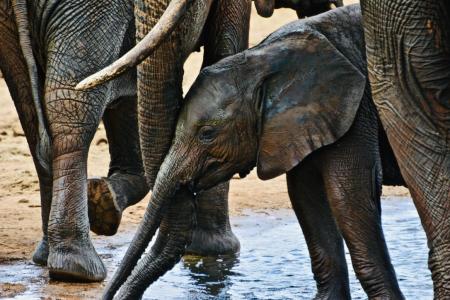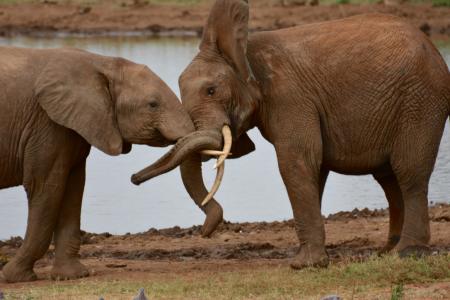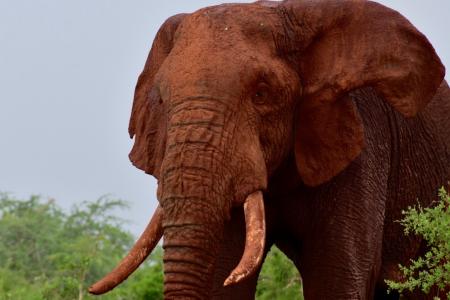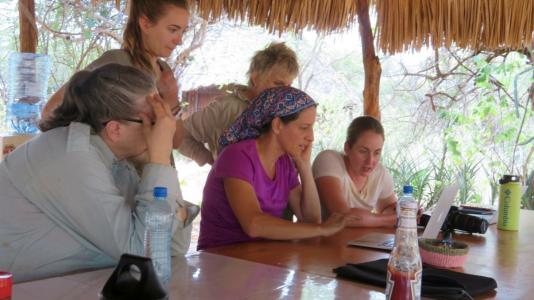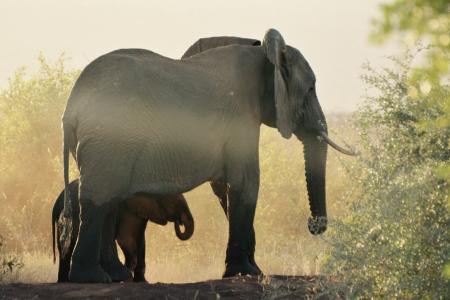How Do You Keep a 6-Ton Elephant Out of Your Corn?
By Lynn Von Hagen, Earthwatch field team leader
In Kenya, Earthwatch researchers are working with local farmers to not only conserve elephants and their habitat but also secure their crops and prevent raids on the expedition Elephants and Sustainable Agriculture in Kenya. Lynn Von Hagen serves as one of the field team leaders for this project and she shares the importance of the data being collected.
Downwind
Elephants have one of the greatest senses of smell on the planet, and one of the ways to observe them more closely is to try to get your research vehicle downwind from them so they can’t catch a whiff of your scent. Working towards these encounters and getting to see the joy on volunteers’ faces is probably my favorite part of our Earthwatch expeditions; there are so many tears of joy on our teams, and mine are often among them.
You see, I sometimes feel guilty working with elephants because everyone loves them, and other species often take an undeserved backseat. But elephants aren’t just amazing because of their complex social structure or their highly complex forms of communication, they are also ecological engineers and keystone species. They transform the landscapes they reside in, converting forest to savannah through tree modification, and their seed dispersal ability greatly influences the floral diversity of the surrounding ecosystem and the faunal species that reside in it.
However, one species can get very frustrated with the presence of elephants in agricultural areas: humans.
Crop Raids
When elephants decide to raid and consume crops of already impoverished farmers, it creates human-elephant conflict (HEC) as native livelihoods are compromised and elephants are viewed as dangerous pests. So, our project focuses on investigating ways that humans and elephants can coexist by testing a variety of deterrents designed to keep elephants out of crops. Our study area is in the farming community of Sasenyi, adjacent to Rukinga Wildlife Sanctuary and home to Wildlife Works, one of the world’s largest REDD++ carbon offset initiatives.
Volunteers help construct, deploy, maintain, and test a variety of deterrents such as beehive fences, metal fences, and acacia fences. Our project has found that a new deterrent designed by our colleague Simon Kasaine is shown to be effective at deterring elephants. Metal strips hang from wire and clang together whenever contacted or blown by the wind, creating a noise akin to a giant wind chime. The Kasaine fence is practical to maintain, easy to make, and relatively inexpensive compared to some other deterrents. This is big news in the HEC world as scientists and wildlife conservationists have struggled to find solutions that are affordable and practical for rural people, and solutions that elephants don’t become habituated to or learn to circumvent. Now we are looking for ways to disperse the information, test other iterations of the fence, and find ways to help communities with a holistic approach to managing HEC with items such as early warning systems that let farmers know elephants are nearby.

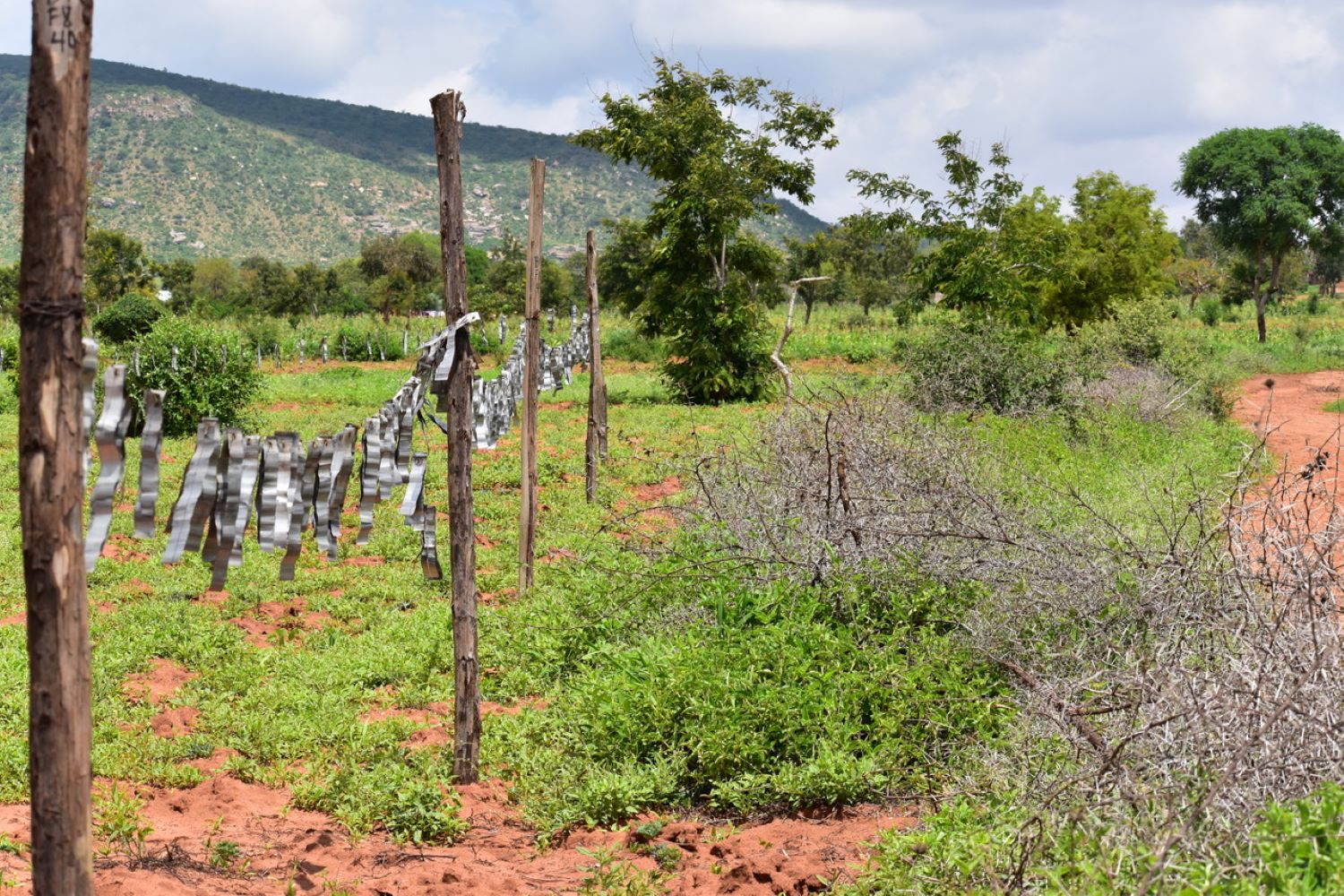
Identification
Another important way that volunteers assist us is by scanning through thousands of images from our camera traps that capture wildlife in the fields at night when we aren’t around. It’s always fun to watch everyone leap out of their seats after scanning through tons of dark images of corn to finally find elephants attempting to raid or passing by. We’ve even had some mischievous elephants come through and tear down fence poles for no reason – just breaking the poles and leaving them lying there; bulls can be cheeky!
We also try to create a profile of which elephants are habitually returning to the fields to raid. This began with creating the first catalog of elephants that frequent this area. Through transects and observations, we document all elephants and note distinguishing features, especially regarding tusks and ears, which are often very unique and the key to recognizing the same individuals again. To date, we have identified almost 100 individual bulls and 30 partial family groups. We compare the catalog to the camera images, find matches, and have verified 8 bulls already who are responsible for crop raiding. This helps us create a demographic profile of which elephants are raiders and we hope to start to understand how bulls associate when/if they decide to raid.
We are also looking for ecological correlates that might indicate when crop raids are imminent. We perform wildlife transects to catalog the mammals and large birds on the ranch to see if any of them may serve as indicator species for predicting when elephant crop raiding will increase. Elephants also forage heavily on trees when grasses (their preferred food) become scarce. We used our same transects to locate, tag, take measurements, and assess elephant damage to 240 trees across the ranch to see if changes in elephant foraging patterns may also forewarn of imminent raids.
Helping communities that are already suffering from the unpredictable effects of a changing climate requires a holistic approach and working directly with the farmers is one of the volunteers’ favorite tasks, as they quickly see the challenges the farmers face and the humble and welcoming spirit of the Kenyan people. It’s another reason we want to help implement sustainable agricultural practices – so that farmers’ livelihoods will be less threatened and we can make strides toward helping communities peacefully coexist with their elephant populations.
To join Lynn in the field and get involved in conducting this critical research, check out the project website for dates and more details here: Elephants and Sustainable Agriculture in Kenya.
